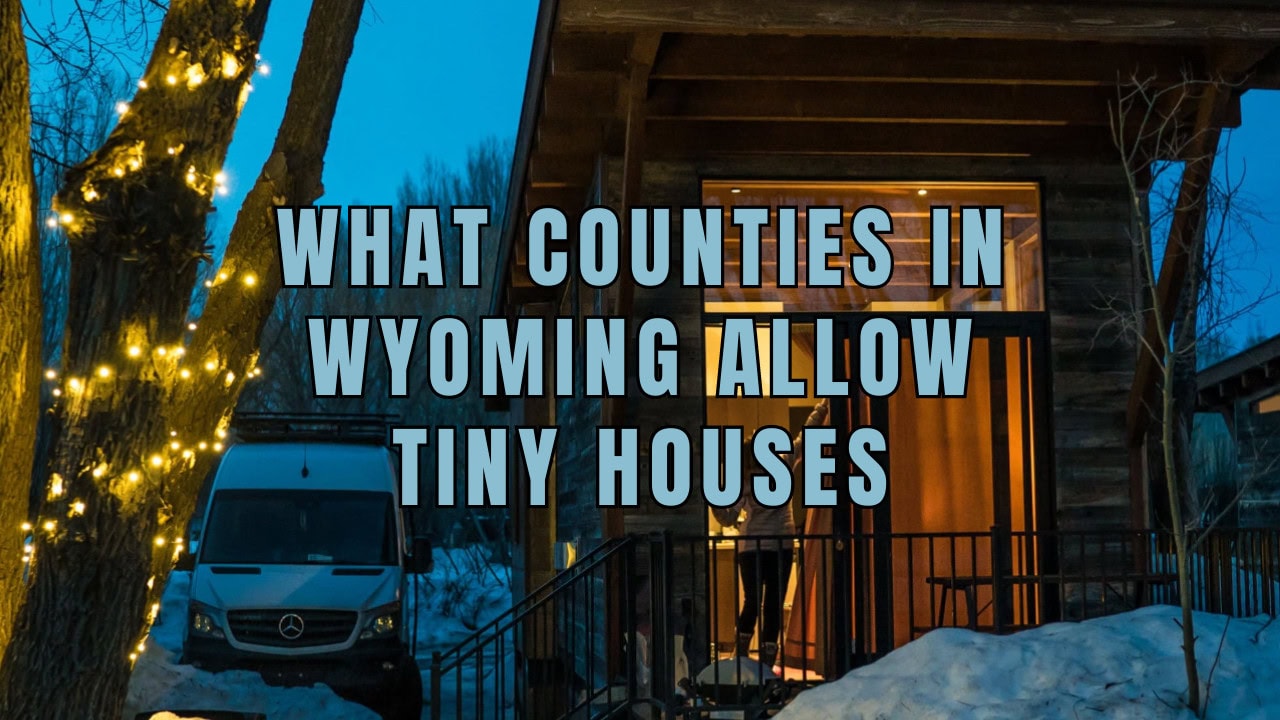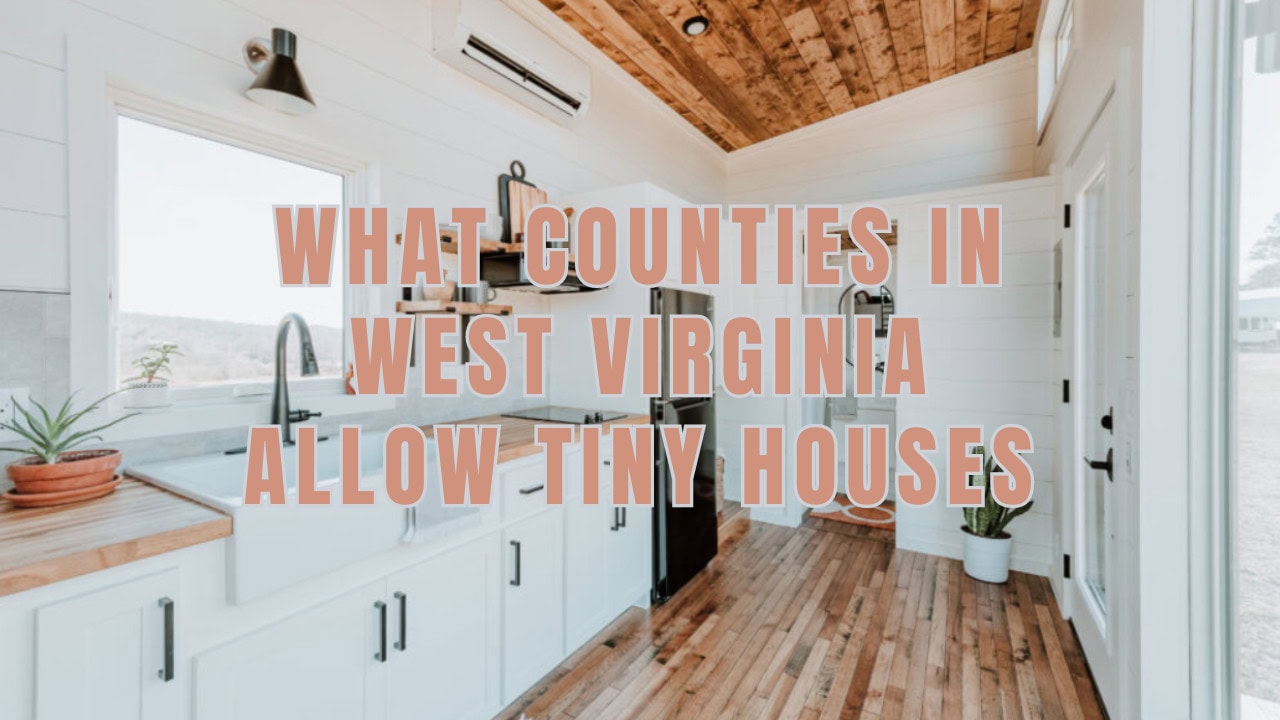Living space size is a highly individualized concept. Some people cannot live without the luxury of a two-story house. Some others believe a house should only perform the most fundamental of tasks. Everything meets their criteria, as long as they can sleep there.
Have you ever wondered how small a house can be? Well, they can be smaller than you think. And yes, people are living in these. Let’s look at the smallest houses in the world, shall we?
What Is The World’s Smallest House?
The smallest home in the world is a one-square-meter house. The One-Sqm-House residence is, as its name suggests, only one square meter (10,76 square feet) in size, but it can adapt incredibly well. It can be set up upright to serve as a small mobile store or meeting area or flattened out for sleeping. Additionally, because it has wheels, you can move it to another location by rolling it. A general need to have at least one square meter of personal space in the world gave rise to Le-Metnzel’s design.
The hardwood frame can be put together with a cordless screwdriver and saw, as this tiny house was constructed from commonplace components. The exterior of the waterproof housing has a sliding window and a lockable door. The gabled housing, which only weighs 88,18 pounds, can be relocated to the desired place at the occupant’s request, allowing them to choose the views and environment. The 79-inch-tall item can be used as a back-friendly couch by turning it over and using the tilted ceiling as a bed of the right size for last-minute sleeping.
Who Created It?
A refugee from Laos named Van Bo Le-Metnzel of Hartz IV Möbel and BMW Guggenheim Lab founded the One Sqm Revolution (also known as the One Square Meter Revolution). Le-Metnzel’s desire to have only one square meter to name his home during those trying years is the key to the message.
He has a unique way of thinking. The architect rose to fame for his straightforward, low-cost instructions for assembling Hartz4 timber furniture. Then he applied that democratic design to homes, creating tiny mobile homes and living quarters on bicycle trailers.
He claims he lacks the skills to use his tiny homes to address homelessness or contemporary refugee camps. However, he has received inquiries about the plans from governmental bodies and ordinary people from Uzbekistan to California.
Additionally, he says that in the future, he’d love to develop a smartphone app that would enable users to locate, unlock, and momentarily claim the small homes that will be erected in public spaces across various cities.
The Smallest Homes In The World
Some homes barely accommodate two people, going beyond the typical range of modest residences! Additionally, some houses are so tiny that they can practically fit anywhere.
So let’s examine a few of the world’s tiniest homes you must see to believe.
MuMa Hut, Romania
One of the smallest residences in the world, Muma Hut, was constructed by volunteers in an orchard in Romania’s Old Village of Armenia. With an audacious window onto the landscape, Muma Hut welcomes visitors who want to connect more closely with nature.
The hut seeks to be a model for the shape of an “orchard room” and the materials utilized, which were sourced locally to revive old customs. The building’s enclosures and shingles were constructed locally by the nephew of a veteran craftsman using wood.
Seelenkiste – Germany
This home was created by three architectural students. They wanted it to be a single-person mobile home. It is intended to be situated in a natural setting so that the individual can reconnect with nature and discover who they truly are.
Nevertheless, despite its size, it appears to be incredibly comfortable. Additionally, the interior’s use of natural wood gives the space a bigger appearance than it is.
The house is 8 square meters in size overall, so it is a one-person home.
House On A Rock – Serbia
This little one-bedroom house, often known as the Drina River House, was constructed more than 50 years ago by swimmers in need of shelter out of necessity rather than want. It has not fared well against the harsh realities of Serbia’s weather, but it was rebuilt each time it fell. Its colorful past and idealized narrative have only increased its current appeal. It is without a doubt Serbia’s most often photographed home, and we can see why. Tara National Park next to it offers some luxurious views as it rests in a tranquil river.
Quay House, Great Britain
The house proprietors are proud of the Guinness Book of Records’ official declaration that their residence is the tiniest in Great Britain.
Robert Jones, a fisherman, owned the house privately; he lived there before the authorities ruled that it was unfit for habitation. His offspring turned the home into a popular tourist destination.
The 10-foot-tall red house has two stories, the first of which is the living space and the second of which is the bedroom.
Ecocapsule, Slovakia
It is a self-sufficient, intelligent, mobile Ecocapsule micro-home powered by solar and wind energy. While maintaining a high standard of living comfort, it enables people to live in distant areas that are not serviced by infrastructure.
It has a dual-energy generation system that, when combined with high-capacity batteries, allows energetic self-sufficiency even in the event of a temporary lack of sources.
The Ecocapsule’s spheroid form is meant to increase dew and rainwater collection. As a result, the water filters guarantee that water from any natural source is converted into drinkable water. Additionally, energy loss is minimized by the outer shell’s shape.
Residents are protected from the harsh environment by hollow walls filled with very effective thermal insulation, which also aids in achieving performance that is nearly as good as a passive house. Furthermore, Ecocapsule is a work of art that shines in any setting thanks to its distinctive and original design.
Keret House, Poland
The Keret House, sometimes known as “the world’s skinniest house,” was built on Warsaw’s Zelazna Street in an alleyway between two multi-story buildings.
The building is only 4 feet wide at its widest point, and in some areas, it is only 2.5 feet wide. The inside, however, is surprisingly habitable and has lots of natural light.
It boasts a world record for narrowness and only 46 square feet of floor area, fitting a bathroom, a kitchen, a bedroom, and a two-beverage refrigerator throughout three floors. There is only a staircase leading to the second story on the first floor. However, the retracted staircase creates a comfortable (though cramped) living room. You have to climb a white ladder to go from the second floor to the third.
Macy Miler’s House – USA
The American architect Macy Miler self-designed and constructed this tiny 196-square-foot home. When money was limited, Macy decided to put her knowledge to good use by designing a modest home for herself on a budget of just $11,000.
The home is constructed entirely of environmentally friendly materials, including a composting toilet, a modified green roof, and radiant floor heating.
This little house has enough for a small family and their enormous dog. Macy even claims that there is a ton of storage space because she has made use of all the empty spaces.
Macy now conducts numerous workshops on the construction of miniature dwellings.
Tricycle Home, China
A house you could move to by bicycle? It exists. Just collapse it like an accordion and proceed to drive. But inside, there’s a funnel, a cooker, a tub, and a water tank. The remaining pieces of furniture can be quickly modified to meet your needs. The dining table can be converted into a bed, but you can just lean the entire thing against the wall when you aren’t using it as either a bed or a table.
Charred Cabin, Chile
A location for two people to eat, sleep, and read was everything needed for one of the smallest tiny houses in the world to stay within budget; all else was to be done outside. The cabin is built as a shelter with a measured link to the environment.
The entrance level is depicted by a single window with a specific height, which influences the activities of the tall room, while the mezzanine emphasizes cooking and bathing. A steel ladder in the middle of the floorplan enables access to an attic that differentiates itself with large horizontal windows enclosing famous mountains.
Cabin In The Woods, Finland
In Finland, Robin Falcke found the ideal spot for a home in the woods close to a lake in 2010. The cabin was constructed with a total floor area of less than 9 square meters to avoid the requirement for a building permit. Its building utilized a lot of repurposed materials.
The house has a main level with a living room, kitchen, and bathroom, a loft of 4.6 square meters, and a sizable deck where residents can unwind and take in the view.
Single House, Poland
The Single Hauz design was created by Front Architects in response to a desire to investigate underutilized spaces. The micro-home has a small footprint, one column, and can be placed anywhere. It is ideally intended to be installed above ground and, in some circumstances, resemble urban billboards. Access is via a flight of stairs, and the usable area is best suited for one or two people.
FAQs
How Small Can A Home Be Built?
The modern tendency toward smaller homes is reflected in minimalist architecture and interior design. They are created for use in communal settings to maximize efficiency while serving several functions. By merging and creating other sections, a room can gain various advantages.
You could, for example, merge the living and sleeping areas in the plan. Bringing many uses into one area gives the room character.
What Are Most Of These Small Houses Made Of?
While wood is a popular material for tiny home frames, it’s not the only one. Steel is typically stronger and lighter. Wood is often easier to work with and slightly less expensive, but if you need to reduce the weight of your house, this will undoubtedly assist.
Is It Less Expensive To Live In These Houses?
Consider all the monthly expenses that can be cut when you have less room. In larger homes, you consume more gas, electricity, water, and heating. Living in a smaller space means you should only utilize what you need, which is one of its many benefits.
The Wrap-Up
These homes demonstrate how many homeowners are willing to live without the luxury of a room. They also offer a potential and maybe long-term answer to the overpopulation issue that will soon become a problem. Additionally, there has been an increase in the percentage of tiny-home owners who reject the concept of large dwellings. Smaller houses are incredibly thought-provoking, whether they offer a retreat from contemporary excesses or permanent housing.





